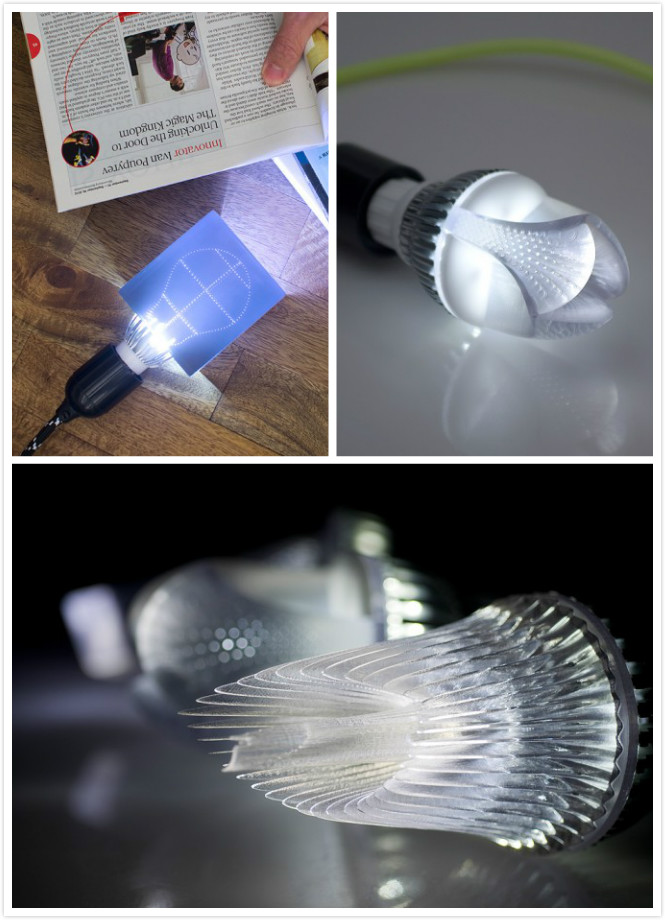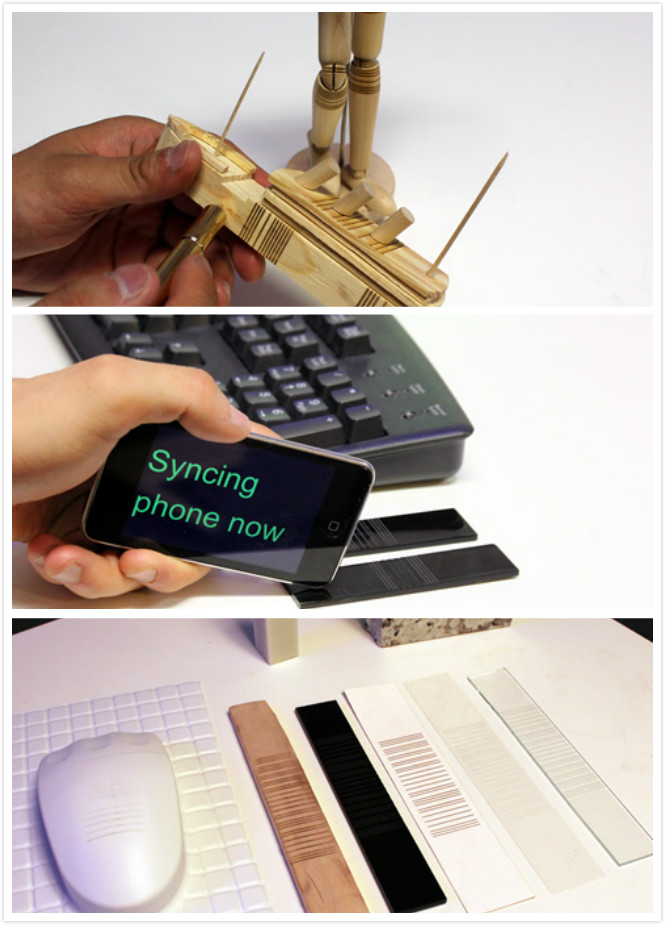The first work I want to introduce is using 3D printer technology to build bulb. by CMU
Field: 3D print; New output.
Technology: Using 3D printer can easily build structures which can never be achieved by traditional fabrication. The bulb is composed of millions of light pipes in which light can be totally internal reflected.
Interaction: Basically it is a new kind of output without any input, however, the makers made several interesting toys based on this technology. As follows:
A toy can move its eyes when human is being around.
A chess which can show digital information on its surface. It's really cool and may someday change the playing of traditional chess!
Value: I think the kinds of feedback, output of our daily life is increasing with the development with computation ability, material science and fabrication technology. The 3D printed bulb changed the way that we get information from light. Also, the work is exploring the possibility that what we can do with 3D printer in light output. It is just one field of feedback and it will for sure inspire more exploration using this technology to build feedback devices.
The second work:
The second work I want to introduce is also from CMU and it is called Acoustic Barcode. It used coded pattern to carry information. When scratched, it makes sound which is binary sequence. A lot of information can be based on binary sequence thus can be based on that acoustic bar.
Field: New input.
Technology: As the picture shown above, the sound wave is captured by a microphone attached on the surface. Computer will analysis the sound information and translate it into binary sequence.
Interaction: By simply scratch a acoustic bar, computers will know what you are scratching. It has several applications such as museum and classroom.
Value: The work enriches the way of input from physical world to digital world. Though it cannot carry as much information as two-dimension code, it provides users a easy interaction (scratch) and can be easily achieved by using smartphone.
The third work:
The third work I want to introduce is stretchable interface developed by Keio University. Using Photoreflectors, a normal stocking can be a new kinds of input to detect stretching and can be used in many applications.
Field: New input, IR photo reflector
Technology: When stretched the pattern of a stocking is sparser than not stretched, which allows more transmissivity light go through it. By measure the reflected light, the photoreflectors can tell whether and how much the stocking is stretched.
Interaction: Several applications have been realized by authors, for example the skin of robot. Using this technology, the robot can sense whether it is touched and what is the direction of touching.
Value: I think the stretchable interface gave a good idea of using simple technology to make normal things interactive. Also, the materials they used is quite common and easy to get. The stocking provides natural soft feedback, however, when combined with sensors, it was a novel input method. We should rethink the material in our daily life and try what can happen when they are combined with sensors and the computation.






The 3D printed optics project was done by Karl Willis and Eric Brockmeyer at Disney Research on campus. We looked at Eric's CNC cake decorator in class. He is still at Disney. Karl is the head of creative research at Autodesk in San Francisco since July 2013. Great project.
ReplyDeleteHi I add the video of his work on YouTube. They even used light to make sensors. I think is a promising field.
Delete